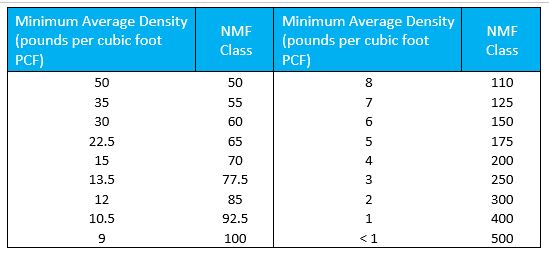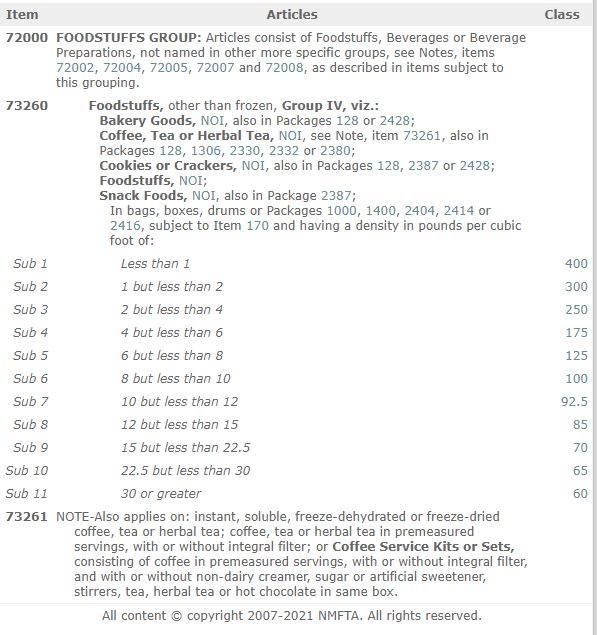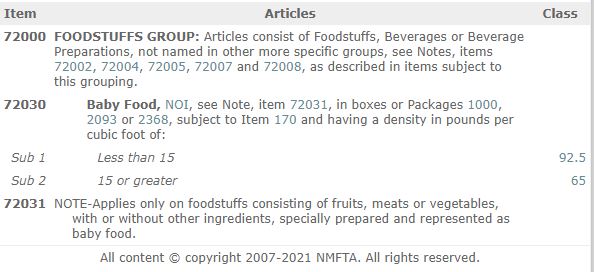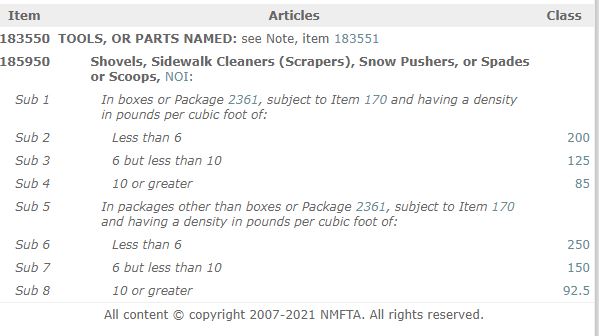-
16
Sep
A Guide to the National Motor Freight Classification (NMFC) Guidebook
If you are involved with LTL shipping, you are probably familiar with the NMFC aka National Motor Freight Classification guidebook. The NMFC is the definitive source of freight classifications for LTL shipping. It can be mysterious yet accessible, confusing yet structured, and ambiguous yet concise all at the same time! You may have your own ways of describing this staple of LTL shipping.
The NMFC classification process and its 18 classes ranging from CL50 to CL500 are founded upon a set of four defining transportation characteristics: Density, Stowability, Handling, and Liability. A famous industry philosopher once opined that the NMFC may be guided by 1 Corinthians chapter 13 in that Density, like Love, is the greatest of the attributes. For classification purposes, density is truly the greater attribute. Below is the set of density range guidelines the NMFC utilizes. It is important to note that this table is not used to actually classify freight, but rather as a tool to aid the classification process.

The NMFC classifies freight by assigning LTL commodities to one of roughly 5,000 individual “items”. An NMFC item is a 4 to 6 digit numeric code ranging from 1010 to 201060, although some users force items to always be 6 digits via use of leading zeros (001010 instead of 1010). Many NMFC items also have multiple sub-items which are designated as a 2-digit code separated with a hypen. For example, you might have 17600-01 and 17600-02.
Following the Pareto principle, the majority of the 5,000 or so NMFC items are rarely used. Conversely, a small number of common items are heavily used. Items fall into one of three distinct buckets, defined by their density attribute:
- Non-Density
- Standard Density
- Non-Standard Density
Non-density items are often a single item with no sub items, and thus a single classification. They are the simplest to understand. Shipment density is not needed to determine the proper classification. Examples include golf tees 17600 and electric razors 168810 as shown below.


Standard density items are becoming more-commonly used and appear to be a means of providing simplification to the NMFC guidebook and classification process. These items utilize a standard 11-sub format by density with classes ranging from CL60 to CL400. While there are only about 300 unique standard density items found in the NMFC, out of the 5,000 total items, these items account for upwards of 50% of all LTL shipments today, maybe even more. Foodstuffs 73260 which includes snack foods, coffee/tea, and cookies/crackers is a solid example.

The final type of NMFC item can be described as Non-Standard Density. This means density is a defining characteristic, but the item does not follow the standard 11-sub format noted above. Further, at times there may be one or more other defining characteristics. Baby Food 72030 and Shovels 185950 are good examples as noted below.


It should be reiterated that LTL freight classifications cannot be determined exclusively by density. While density is a prevailing characteristic, and may be the only characteristic you need to know the majority of the time, it is not the only characteristic. Classifications today must come from the NMFC guidebook itself. Users can obtain access via the ClassIT product at http://www.nmfta.org/pages/ClassIT. This will provide full access to not just the classifications of each NMFC item, but also important rules such as Mixed Commodity and the 65% Pallet Crate rule. Of course, you will need to balance these NMFC rules against those found in LTL carrier rules tariffs. Sounds like another blog topic, or two, or three!
- (479) 461-1672
- Contact Us
